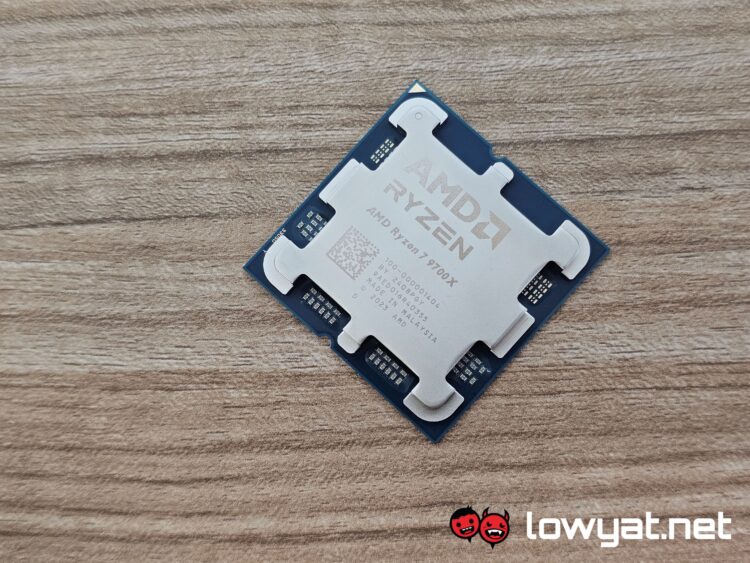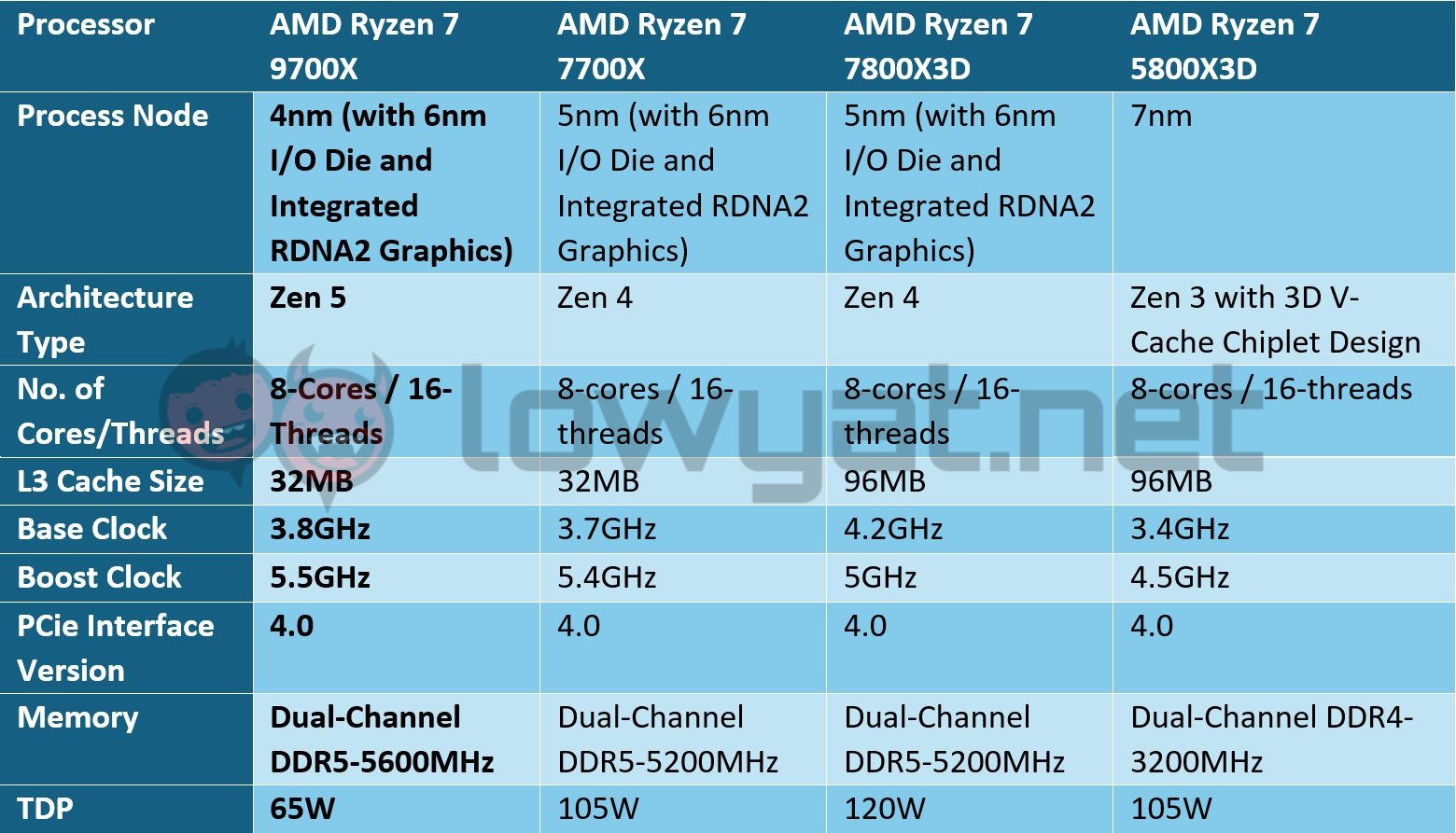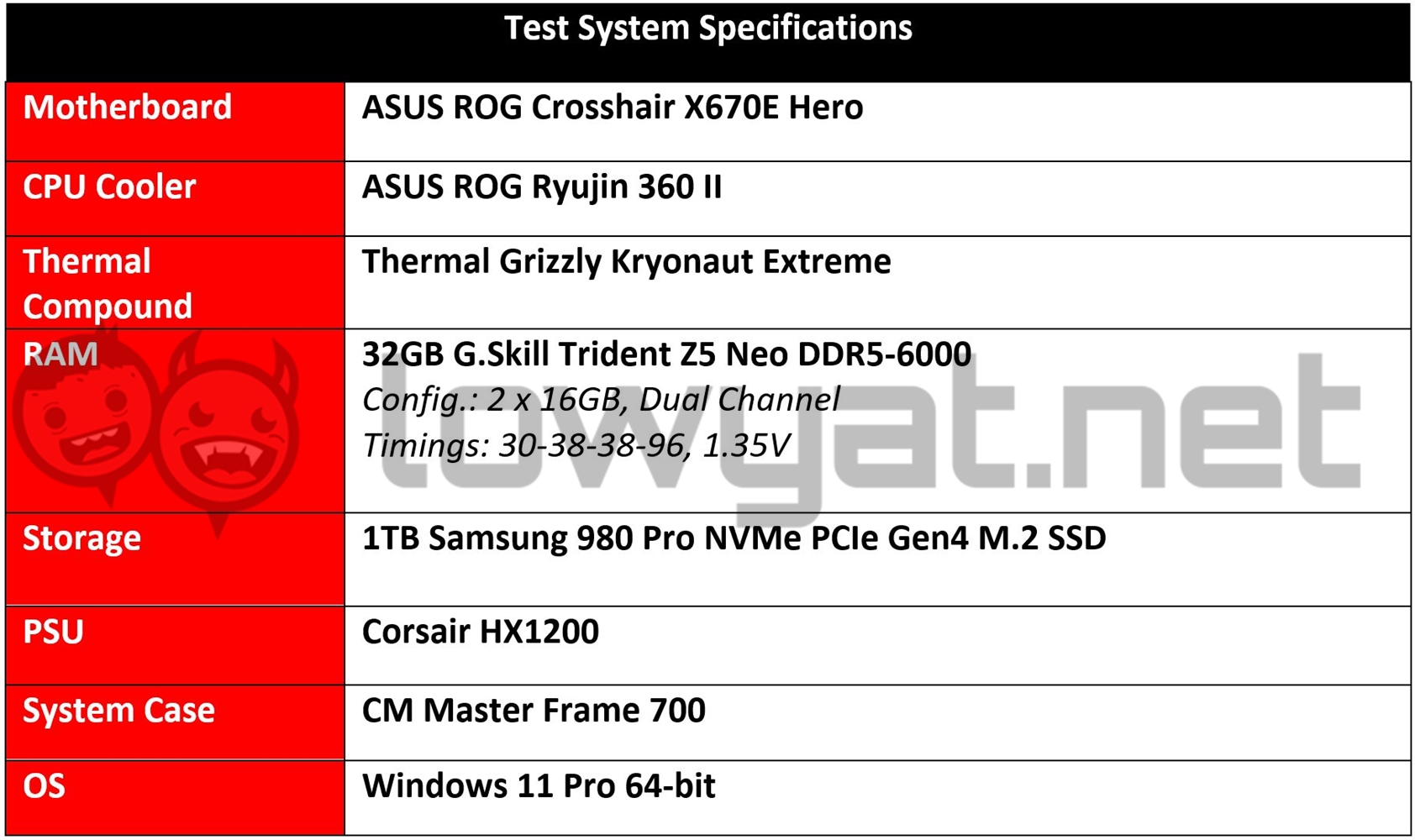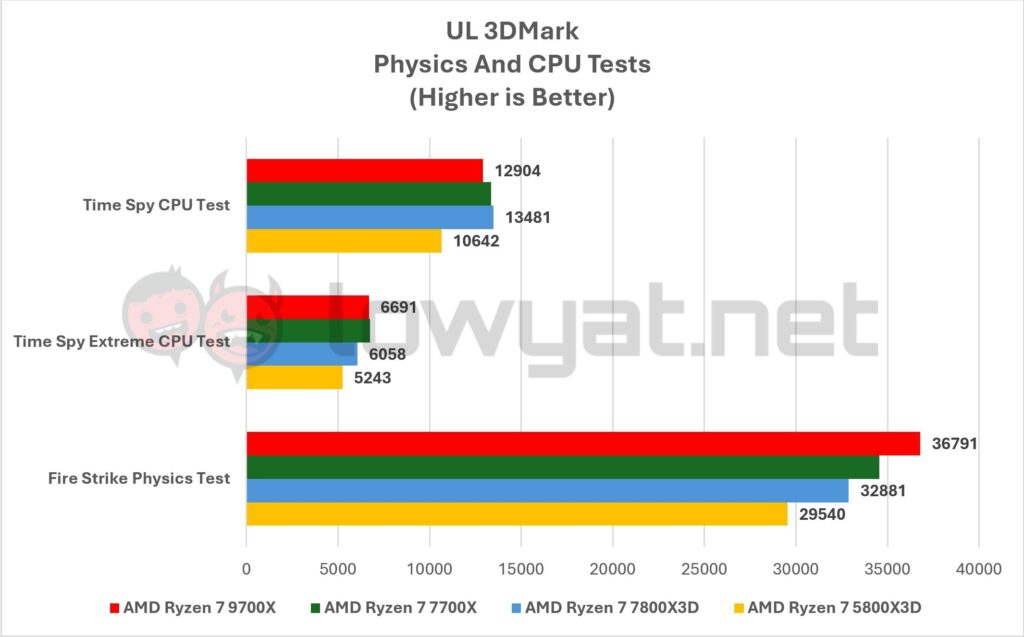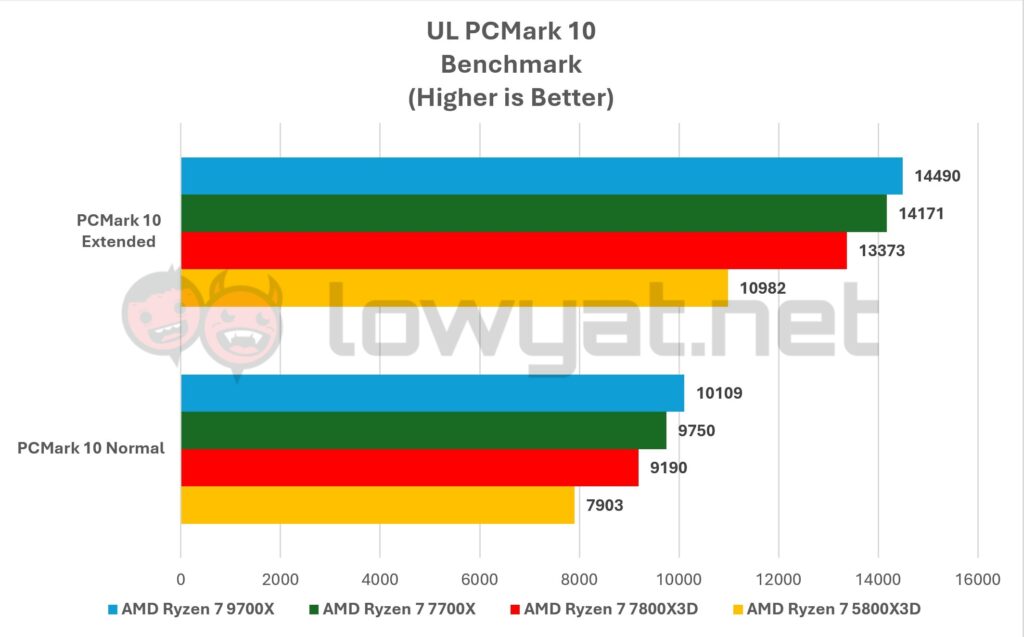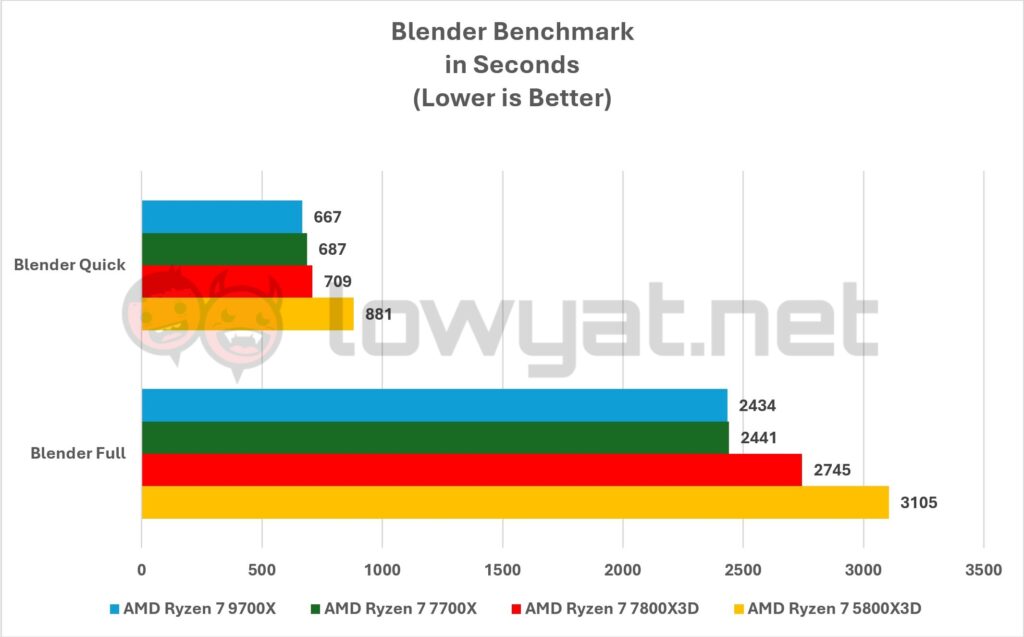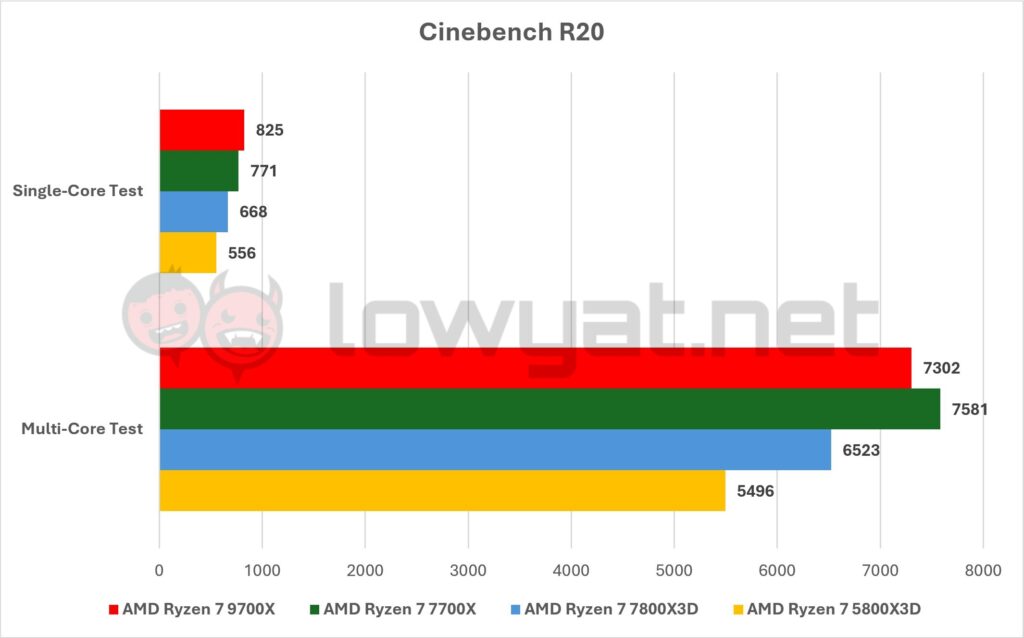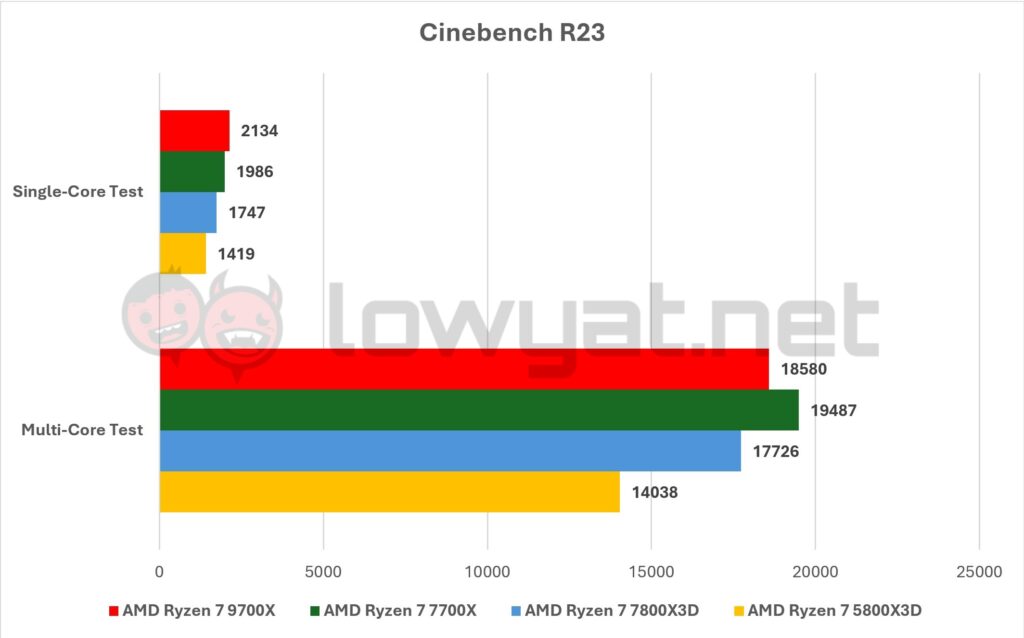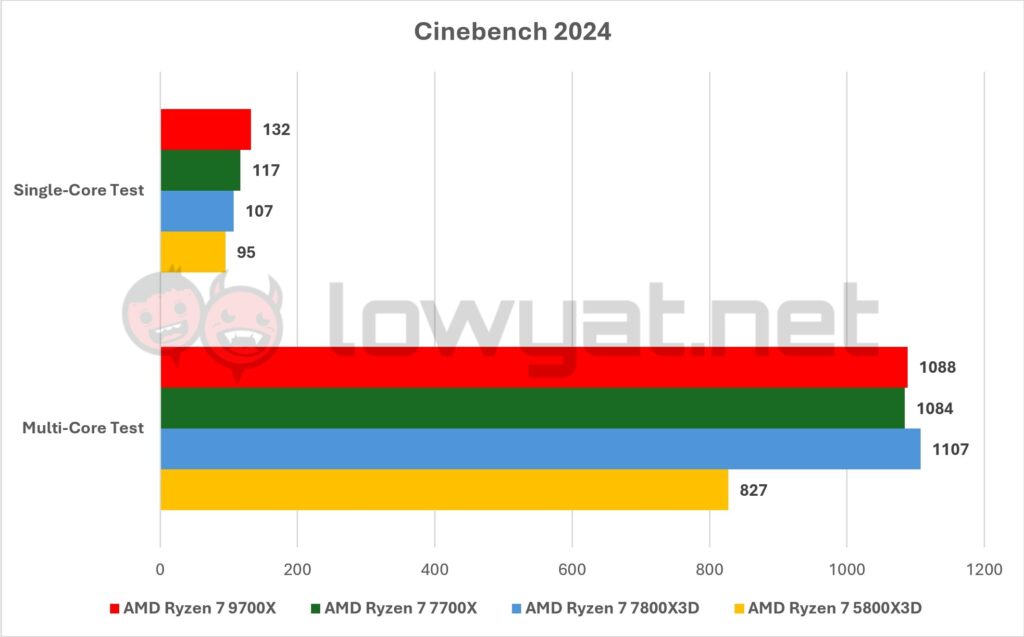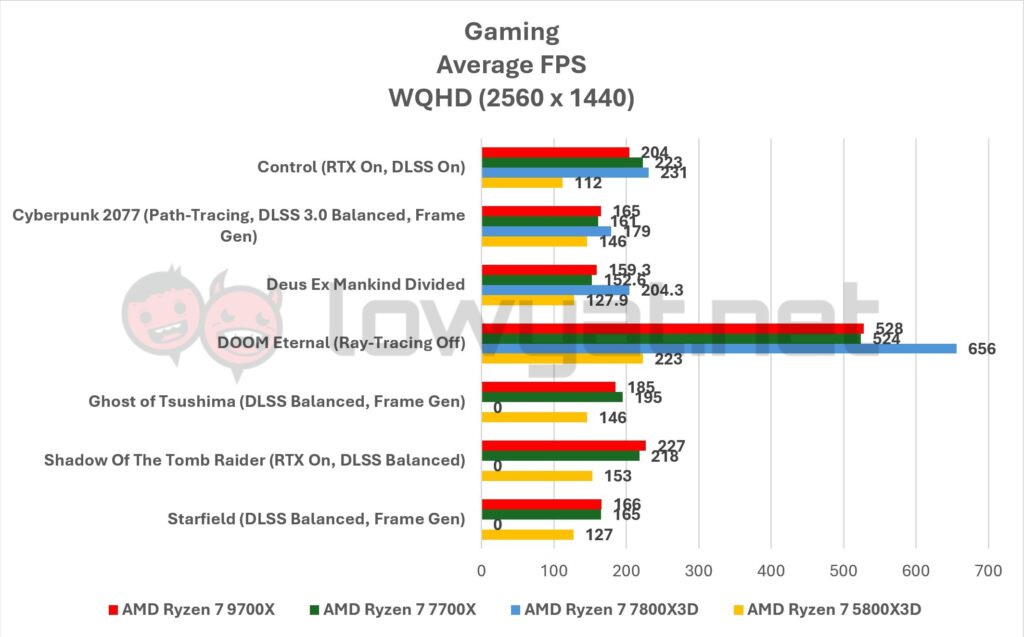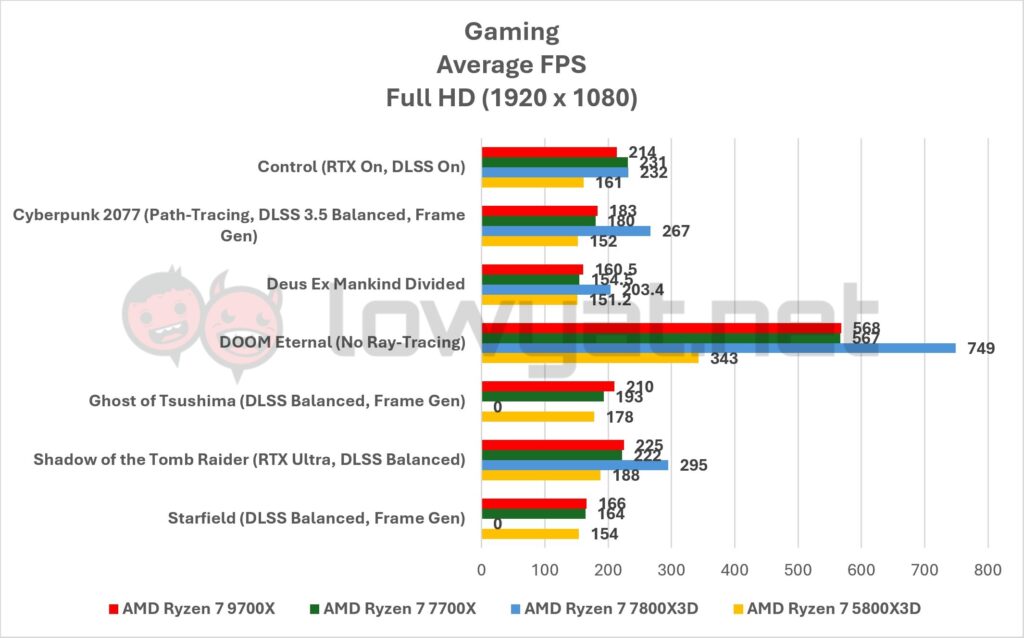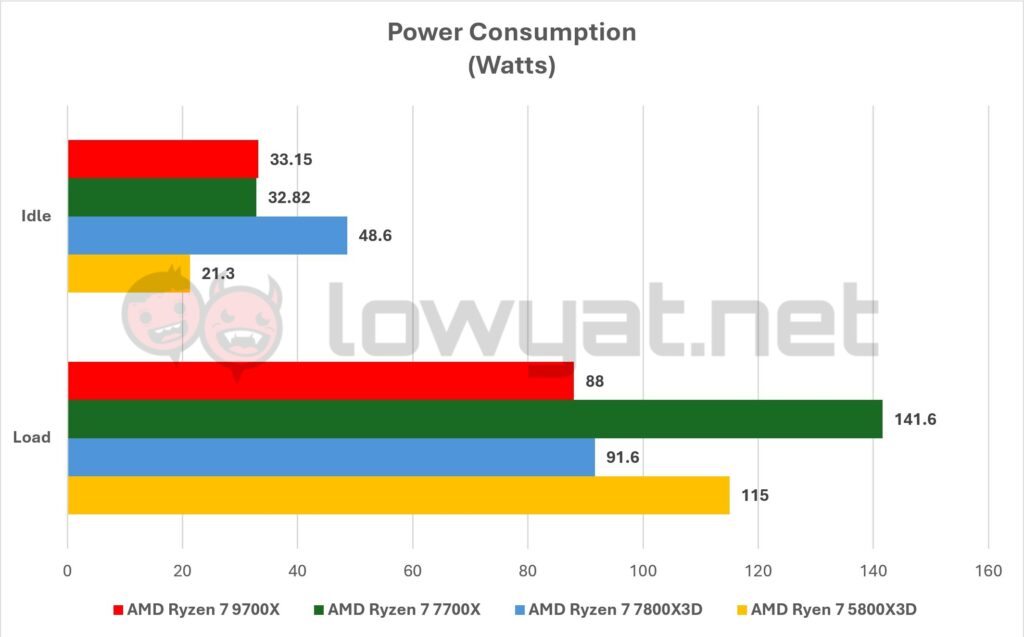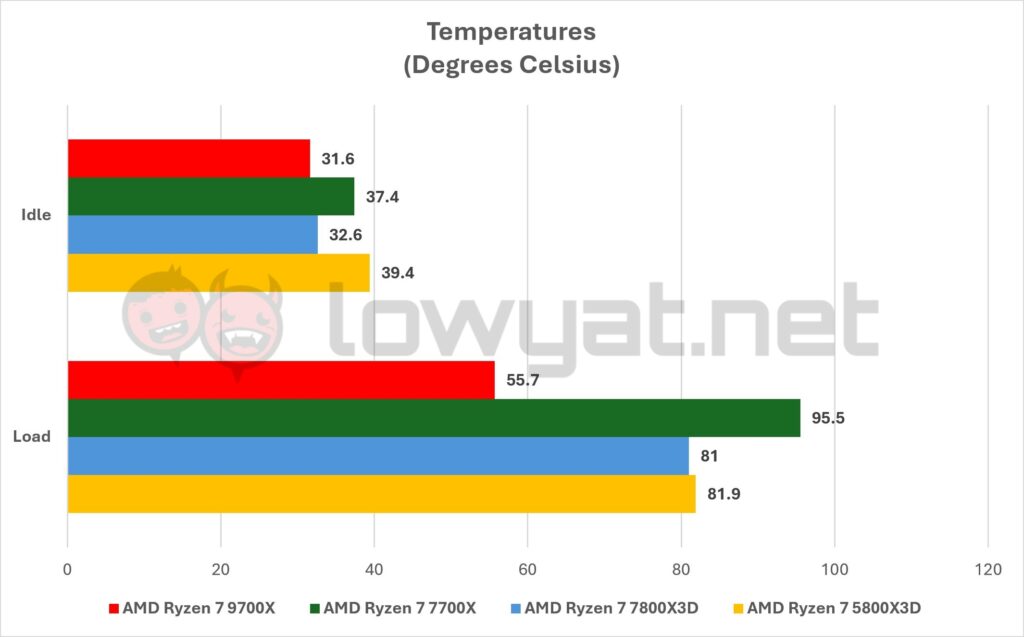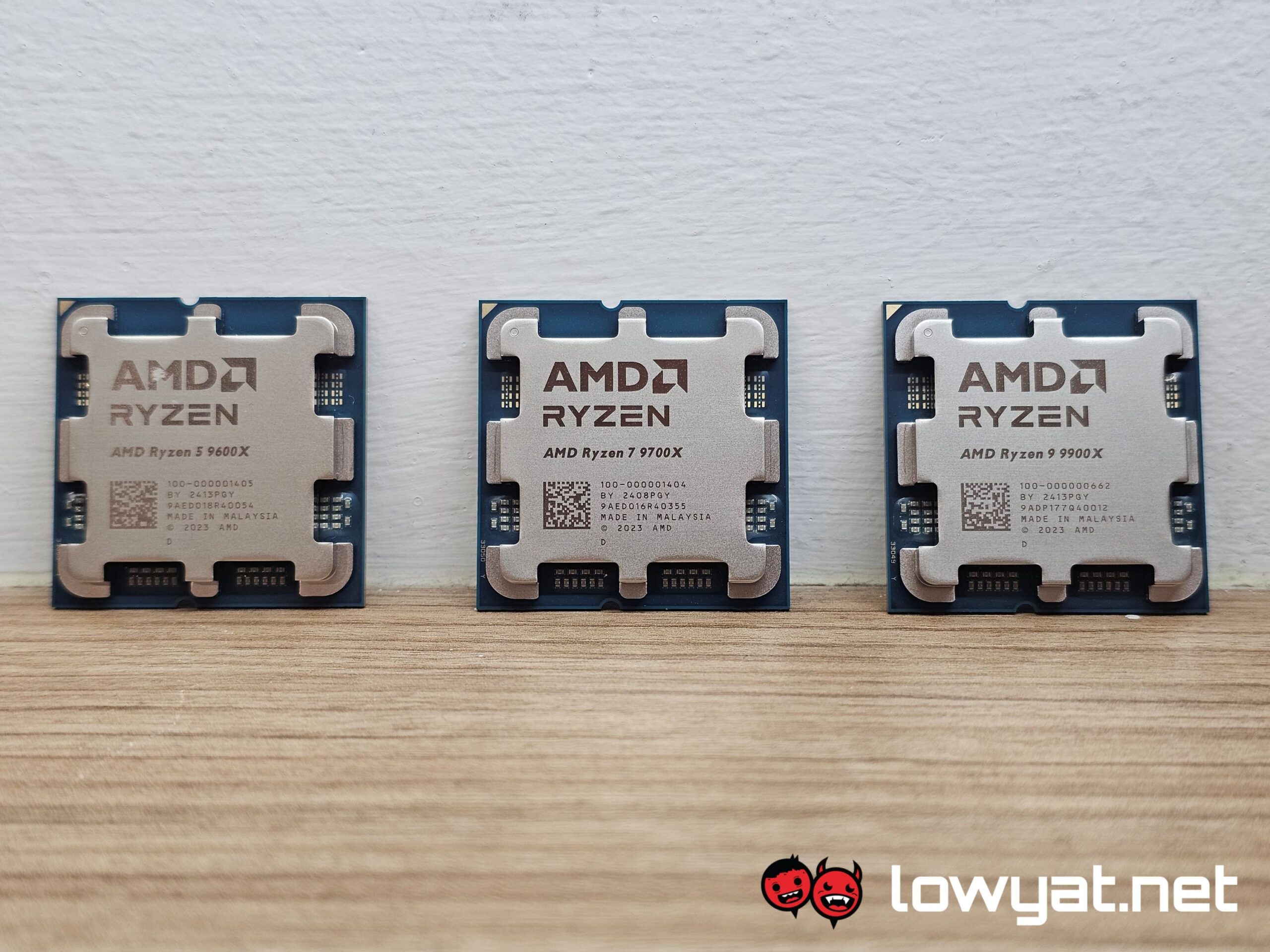After an unexpected delay in their availability, AMD finally launched the Ryzen 7 9700X and Ryzen 5 9600X, which also marks the official arrival of the Zen5 architecture into the market. In this review, I’ll be taking a look at the 9700X and how much more efficient the red chipmaker has made this CPU over its direct predecessor.
Specification
On paper, the majority of the 9700X and its internal specifications are a carry-over from its predecessor, the 7700X, save for the few obvious changes and improvements, such as the Zen5 architecture. Despite its relatively low-key launch, Zen5 comes with the promise of a significant improvement to its performance-per-watt delivery. More on that in the Benchmarks section. To run it down further, it’s basically clocked to run just 100MHz faster, both in base and boost clocks, than the 7700X.
Coupled with Zen5 is a new Instruction Fetch/Decode Advance, or to put in another complicated term, Dual Pipe Fetch with Advanced Branch Prediction. There’s a whole bag of other Advances but this is the one that really sells the new architecture. Now, to put into more layman terms, the new algorithm basically allows the chipset to run two branch predictions in advance, instead of just one. By allowing this, the CPU is basically able to make more accurate predictions in the branches, at a lower latency, and therefor executing instructions more efficiently.
One thing that the new Zen5-powered 9700X doesn’t get though, is the new XDNA2 architecture. That’s reserved for the current Ryzen AI mobile lineup at the moment, and while AMD hasn’t officially mentioned it, it is looking more likely that the NPU may only be making its way with the next generation of Ryzen desktop processors.
Testbench
To test the 9700X, AMD recommended me to continue using the current X670E platform that I already have and even provided me with the latest BIOS update and chipset drivers to ensure everything went as smoothly as possible. I had reached out to one of the brands for a new X870E motherboard but at the time of this review, they did not manage to pass it to me.
For comparison’s sake, the graphs included in the section below includes performance metrics from the 5800X3D, 7800X3D, and its direct predecessor, the 7700X. Note that, with some of the processors, certain details in gaming are recorded as zero, primarily because I am no longer in possession of the CPU and the title added here was added to the list long after their individual reviews were written.
Benchmarks, Temperatures, And Power Consumption
Given that my review comes a little later past the lifting of AMD’s embargo, allow me to tell you that I am well aware of the wildly different results of the 9700X that seemingly swing from one end of the spectrum to the other. In my case, I am both lucky and a little bit unlucky with my unit.
When running on a general purpose use case, the 9700X runs without a hitch. When it comes to the synthetic benchmarks, every test also concluded without issue. When it comes to gaming, though, the process wasn’t as smooth sailing. In my suite of real-world control titles, the system would buckle and come crashing down with some titles. Primarily, titles such as DOOM Eternal and Starfield. These two aren’t necessarily the most CPU-intensive titles but for whatever reason, they were the two games that caused my games to crash. I somewhat managed to solve the issue by reseating the CPU; once this was done, the issue went away.
Moving on: as you can see, the gaming prowess of the 9700X isn’t too far off from its predecessor. In fact, I would go so far as to say that they’re both evenly matched and are trading frames.
The takeaway for me here, though, is AMD’s claim of better performance-per-watt and, as an extra added bonus, significantly better thermals. At full load and with work intensive, the processor never pushed beyond 57°C. While inconsistent in its performance, it can’t be said that the 9700X cannot go toe-to-toe with its processors and, with some titles, the triple-stacked L3-Cache 7800X3D.
More impressive is the fact that this is a 65W CPU, although HWInfo does list my CPU peaking at 88W. And if you’ve watched LTT’s review on the same CPU, you’ll know that when given unlimited power, it can reach a peak power consumption of 155W.
Conclusion
When AMD launched the Ryzen 7000 Series back in 2022, it basically served as the red chipmaker’s chance not just to adopt the LGA format, but also to lay the foundation for all future CPU, starting with Zen4 and a major performance uplift. With Zen5 and the Ryzen 9000 Series, AMD has basically tweaked the formula, tweaking this generation to maintain the status quo, and consume less power while doing so.
The 9700X is also cheaper than the 7700X at RM1,749, therefore making that tad bit more affordable, but it’s honestly not by much. Again, the chief reason I would recommend this CPU is if you wish to migrate from the PGA-based Ryzen 5000 Series platform, or if you’re looking to reduce your power consumption, skipping its Ryzen 7000 series counterpart entirely.
Follow us on Instagram, Facebook, Twitter or Telegram for more updates and breaking news.


